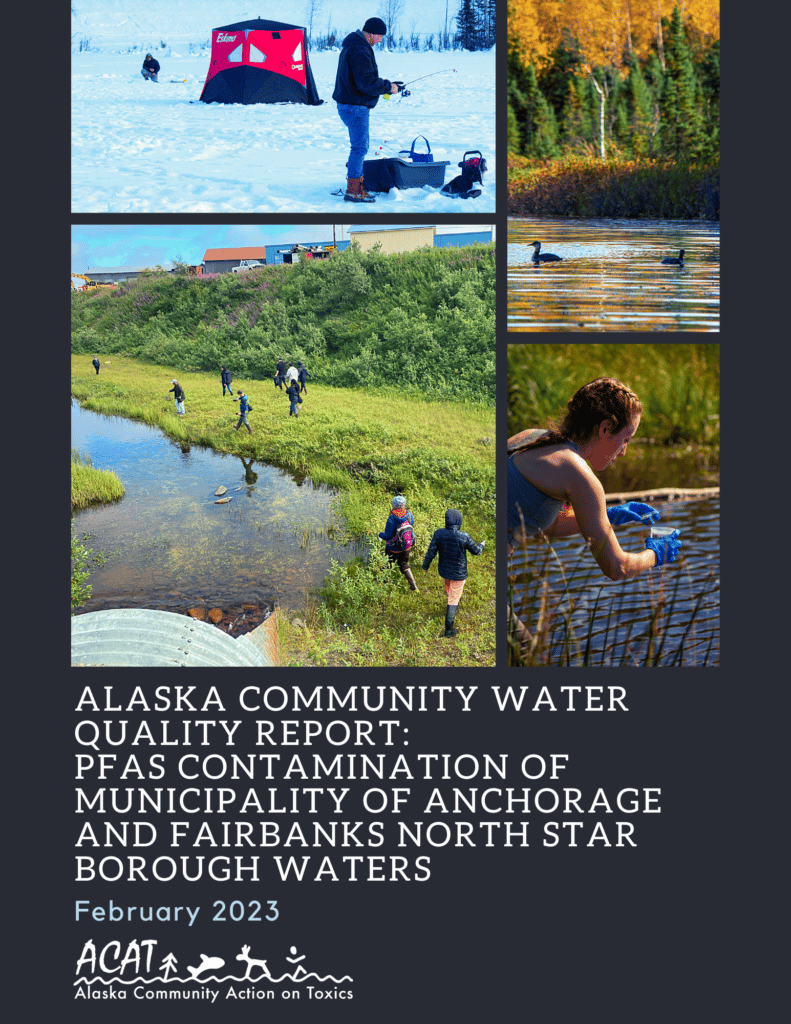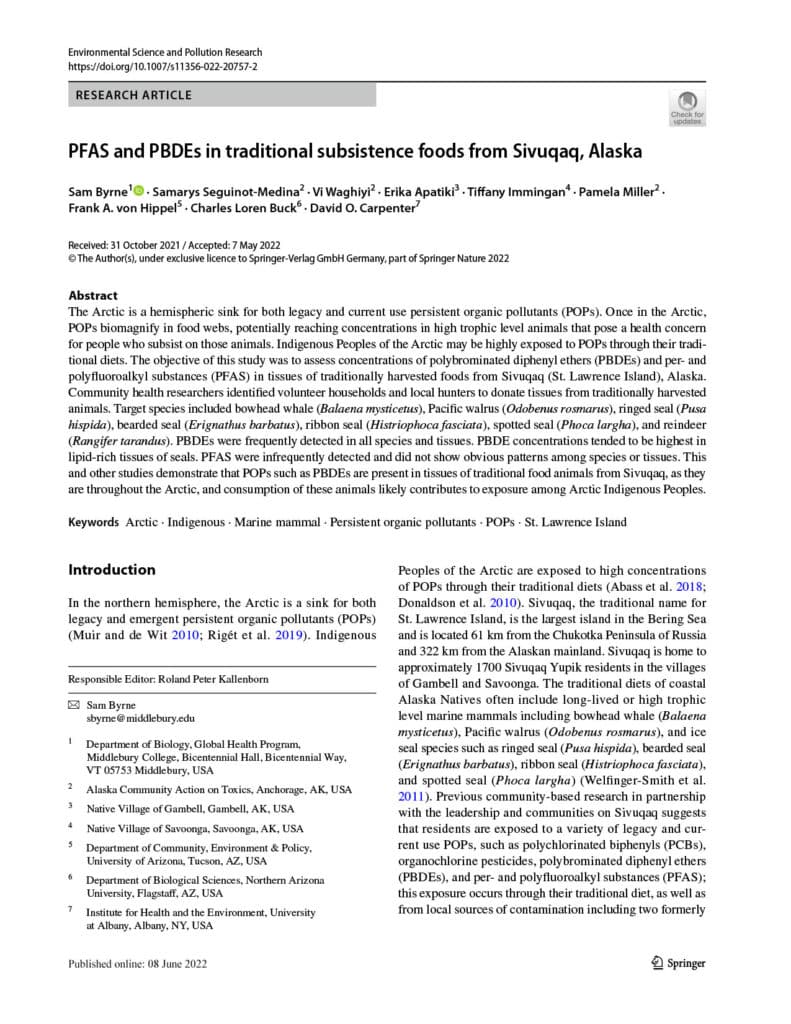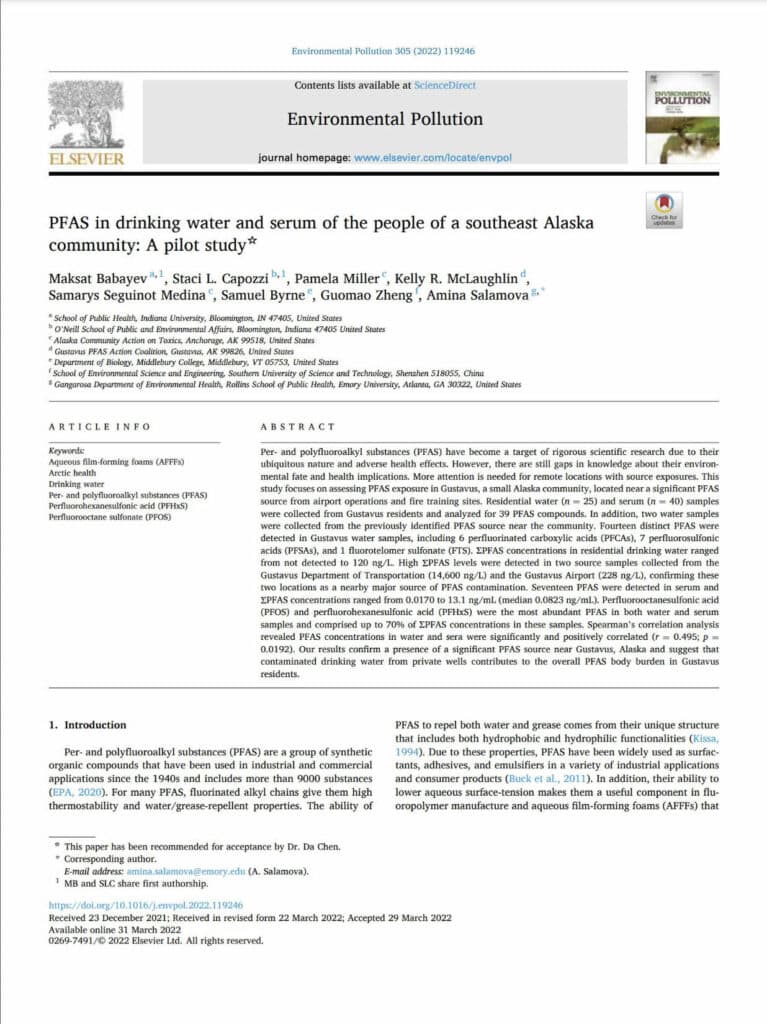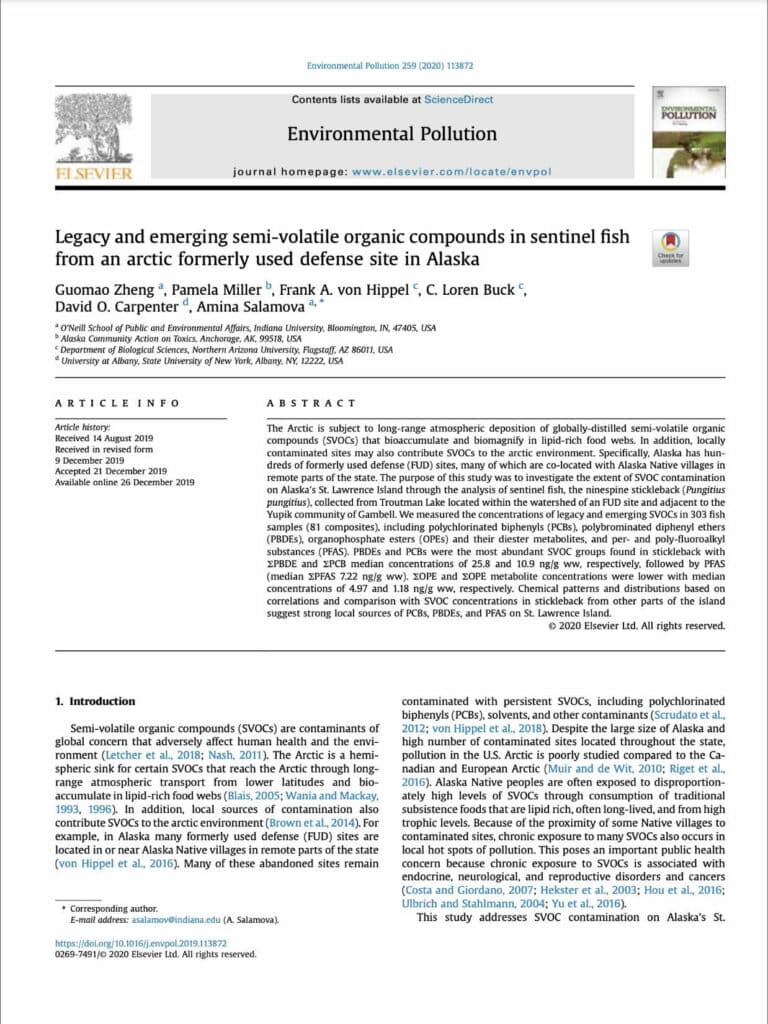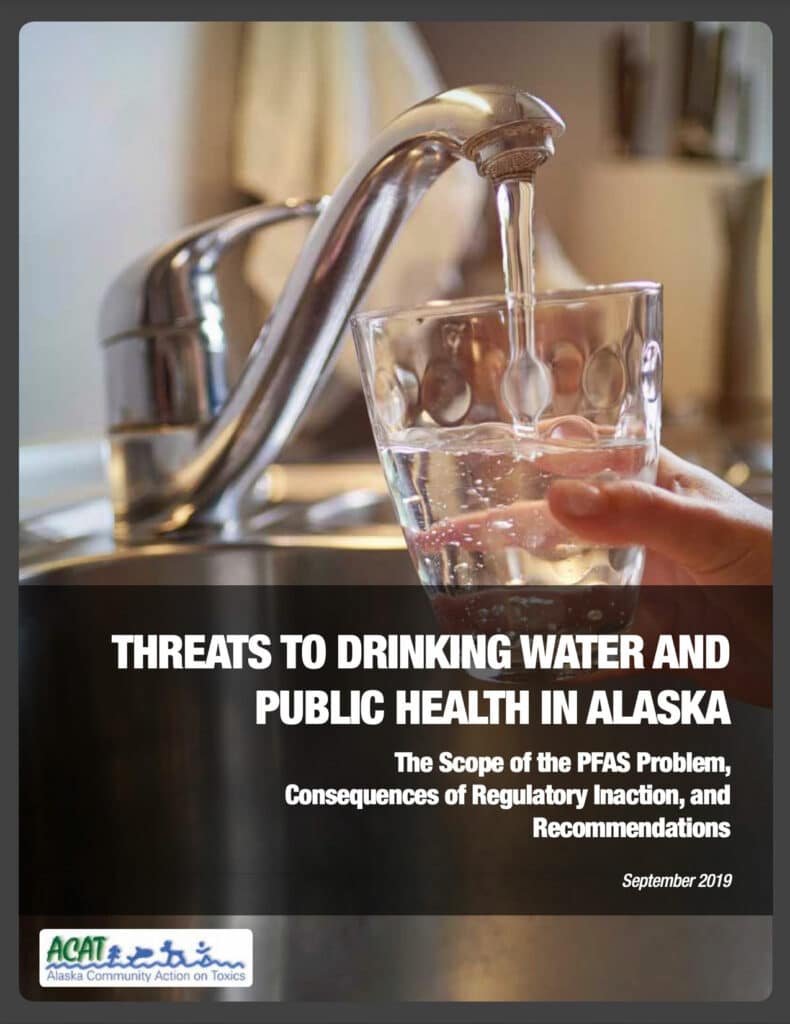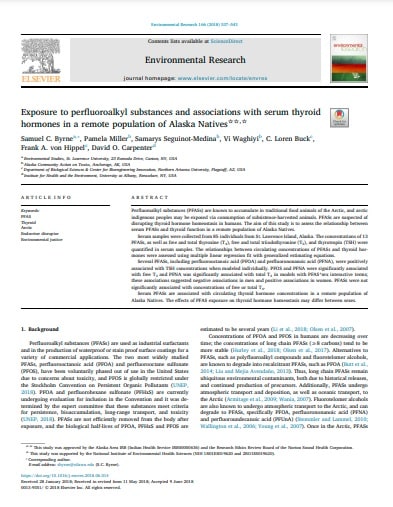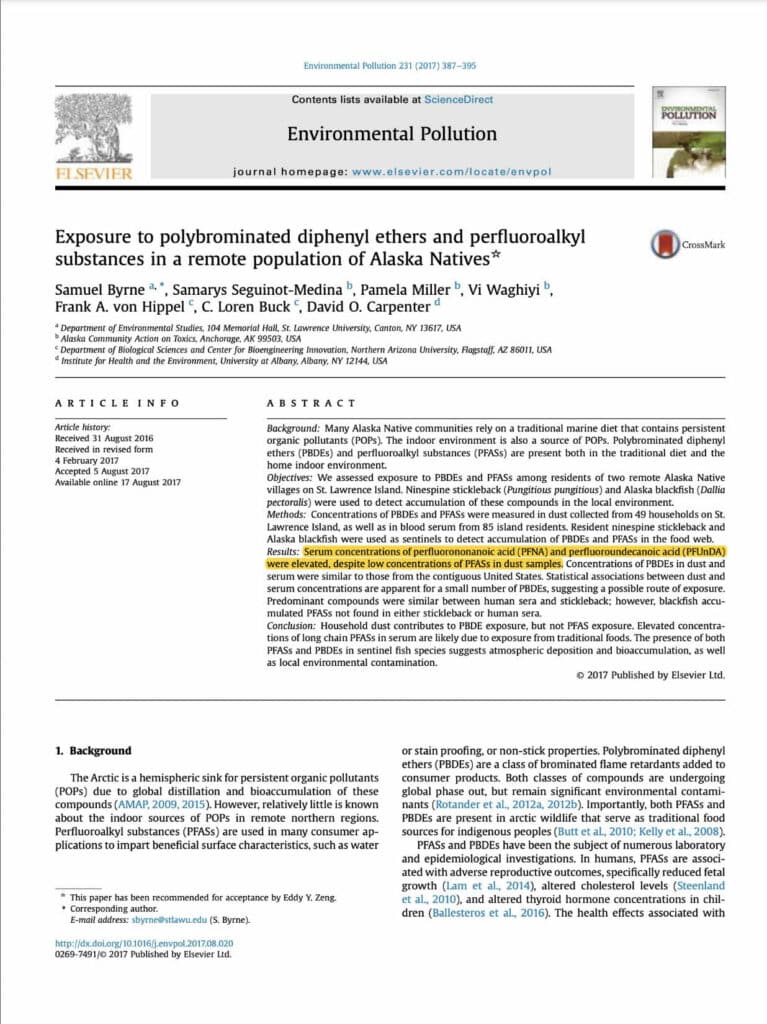PFAS
Alaska Community Water Quality Report: PFAS Contamination of Municipality of Anchorage and Fairbanks North Star Borough Waters
Alaska Community Action on Toxics (ACAT) conducted independent water quality testing in 2022 that showed PFAS (per- and polyfluoroalkyl substances) contamination in Anchorage lakes as well as in Ship Creek. These results show contamination in lakes used for swimming and fishing. The results also show contamination in Ship Creek downstream from Joint Base Elmendorf and…
Read MorePFAS and PBDEs in traditional subsistence foods from Sivuqaq, Alaska
The Arctic is a hemispheric sink for both legacy and current use persistent organic pollutants (POPs). Once in the Arctic, POPs biomagnify in food webs, potentially reaching concentrations in high trophic level animals that pose a health concern for people who subsist on those animals. Indigenous Peoples of the Arctic may be highly exposed to…
Read MorePFAS in drinking water and serum of the people of a southeast Alaska community: A pilot study
This study assessed PFAS exposure in Gustavus, a small southeast Alaska community, located near a significant PFAS source from airport operations and fire training sites. Our results confirm the presence of a significant PFAS source and suggest that contaminated drinking water from private wells contributes to the overall PFAS body burden in Gustavus residents.
Read MoreLegacy and emerging semi-volatile organic compounds in sentinel fish from an arctic formerly used defense site in Alaska
The purpose of this study was to investigate the extent of contamination from military operations on Alaska’s St. Lawrence Island (Sivuqaq) through the analysis of sentinel fish, the ninespine stickleback (Pungitius pungitius), collected from Troutman Lake located within the watershed of a formerly used defense site and adjacent to the Yupik community of Gambell. The…
Read MoreThreats to Drinking Water and Public Health in Alaska – The Scope of the PFAS Problem, Consequences of Regulatory Inaction, and Recommendations
This investigative report informs actions to address the public health crisis caused by PFAS contamination. In Alaska, the dispersive use of AFFF (aqueous film forming foam) on military bases and airports has contaminated the drinking water of communities from the North Slope to SE Alaska. PFAS have been discovered at over 100 individual sites (mostly…
Read MoreExposure to perfluoroalkyl substances and associations with serum thyroid hormones in a remote population of Alaska Natives
Perfluoroalkyl substances (PFASs) are known to accumulate in traditional food animals of the Arctic, and arctic indigenous peoples may be exposed via consumption of subsistence-harvested animals. PFASs are suspected of disrupting thyroid hormone homeostasis in humans. The aim of this study is to assess the relationship between serum PFASs and thyroid function in a remote…
Read MoreExposure to polybrominated diphenyl ethers and perfluoroalkyl substances in a remote population of Alaska Natives
We assessed exposure to PBDEs and PFAS among residents of two remote Alaska Native villages on St. Lawrence Island. We also measured these contaminants in the sentinel fish species, ninespine stickleback and Alaska blackfish.
Read More
